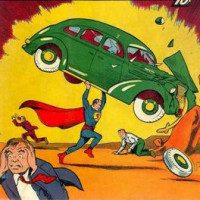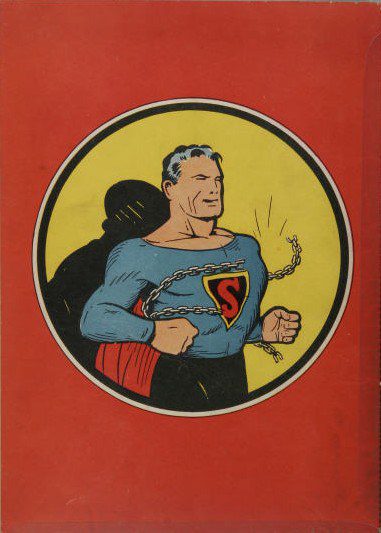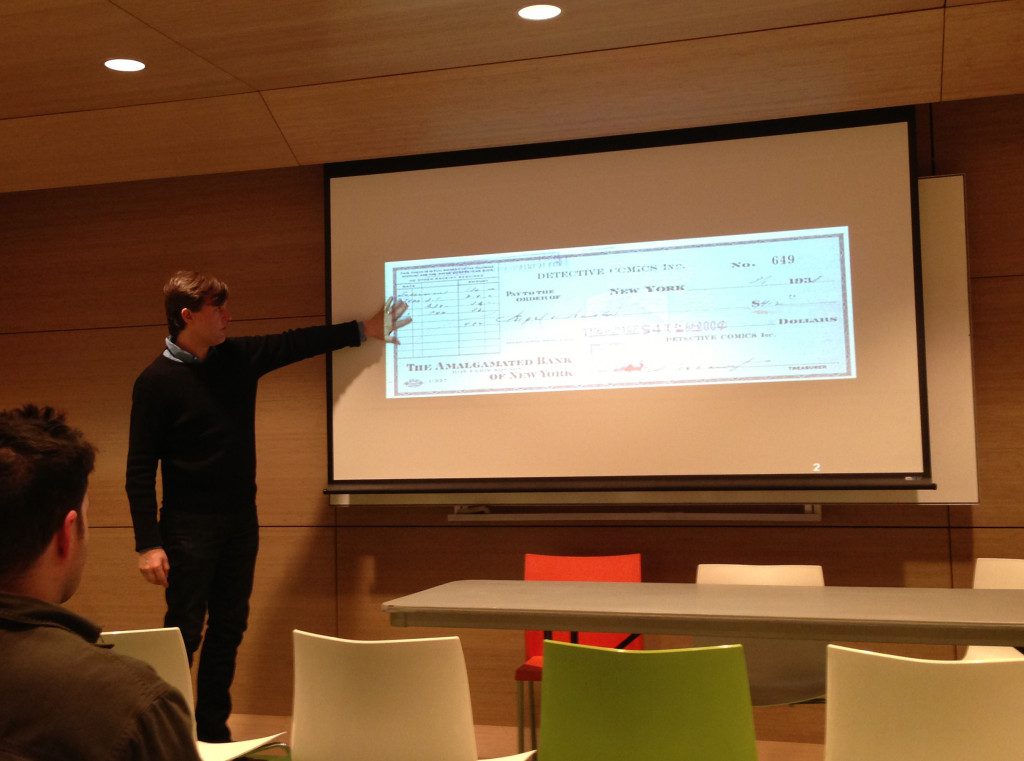The New York Comics & Picture-Story Symposium is a weekly forum for discussing the tradition and future of text/image work.Open to the public, it meets Monday nights 7-9 pm EST in New York City. Presentations vary weekly and include everything from historical topics and technical demonstrations to creators presenting their work. Check out upcoming meetings here.
This week, we celebrated the 75th anniversary of Action Comics No.1, or Superman’s comic book debut. Comics editor, writer, and educator Danny Fingeroth, comics historian Peter Sanderson, and attorney/strategist Jeff Trexler looked at several interesting facets of our first comic book superhero. Crucial questions of the evening focused on Superman’s identity: who is Superman? who is Clark Kent? who was he in 1938 and who is he now? Each of the speakers touched on this issue in a different way.
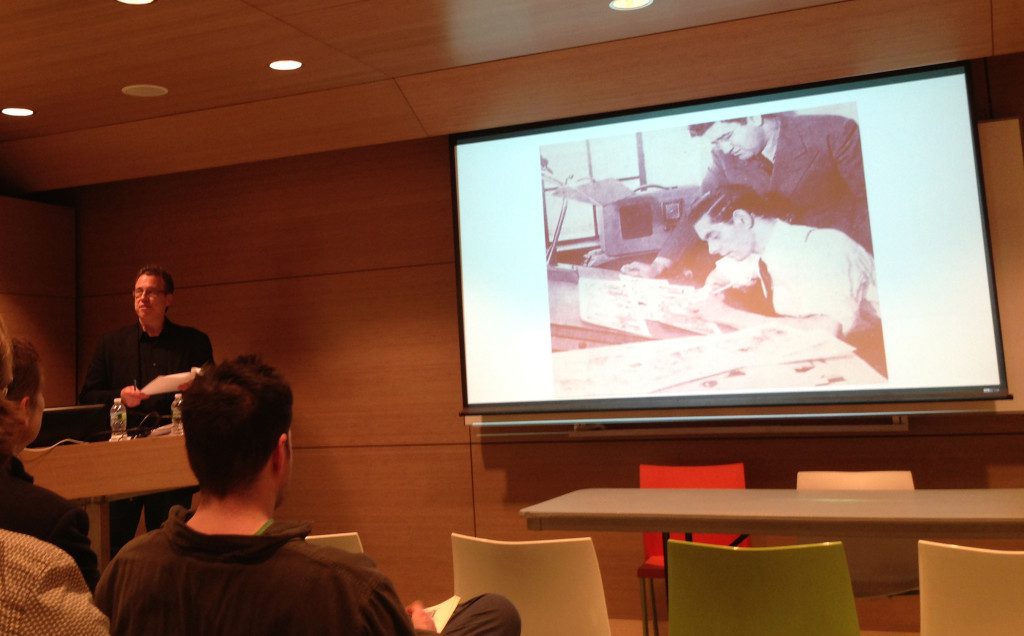 Since the discussion brought up the composite or multi-faceted nature of Superman’s cultural identity, it was fitting that Fingeroth began by listing 75 Cool Facts About Superman (“He can make coal into diamonds … he was named for an archetype and then became the archetype”). Next, he gave a reading of Action Comics No.1, the Superman debut story that changed comic book history. He noted points like the scientific explanation for Superman’s powers and the action’s pacing. He then read from his book, Superman on the Couch, about the Man of Steel’s dual identity.
Since the discussion brought up the composite or multi-faceted nature of Superman’s cultural identity, it was fitting that Fingeroth began by listing 75 Cool Facts About Superman (“He can make coal into diamonds … he was named for an archetype and then became the archetype”). Next, he gave a reading of Action Comics No.1, the Superman debut story that changed comic book history. He noted points like the scientific explanation for Superman’s powers and the action’s pacing. He then read from his book, Superman on the Couch, about the Man of Steel’s dual identity.
Pointing out that secret identities come with both negative and positive associations (criminals are as likely to wear masks as much as superheroes), Fingeroth said that he didn’t take the common superhero justification for a dual identity at face value. That motive being: to hide and protect the hero’s loved ones from his/her enemies. Beat cops don’t have to assume a new name to have a normal life. On the other hand, secret police and hooded enforcers use disguises in destructive ways. So why, Fingeroth asked, did the dual identity become such a “staple” of popular culture? He proposed that this was for social and psychological reasons. Having a dual identity is a wish-fulfillment fantasy just as powerful as Superman’s ability to fly or bend steel. “This may seem like my life, but it is not my life,” Fingeroth explained, “you don’t know the real me.” Also, the cultural associations of a secret identity has powerful ties to the immigrant experience. Quoting Gary Engle, Fingeroth said, “Clark Kent is the epitome of visible invisibility … a figure of total cultural assimilation, and significantly, he is not real.” Superman, a fictional alien orphan created by two Jewish cartoonists, embodies these issues of identity and assimilation. Especially for first-generation immigrants, asking “who am I? who do I want to be?” represented complicated choices and uncertainties about survival, self-knowledge, and community.
Peter Sanderson used a 1942 Fleischer Superman animation, The Bulleteers, to highlight themes he frequently returned to during an overview of Superman’s 75-year history. Calling back to Fingeroth’s mention that when Action Comics No.1 came out, Adolf Hitler was Time Magazine’s Man of the Year, Sanderson contextualized what was probably on the Fleischers’s audience’s minds in 1942. Both the U.S. and England were immersed in WWII and both countries had suffered aerial attacks, so the idea of the “bulleteers,” airborne criminals who swoop out the sky and destroy buildings, touched on real fears. In a post 9-11 world, Sanderson notes, the bulleteers come across as terrorists, making the appeal of Superman as someone who could fight these powerful and chaotic forces even more relatable. Fingeroth and Sanderson both touched on the ambiguity of early Superman’s identity: both returned to Action No.1’s cover of Superman hurling a car. From the image alone, it’s unclear if he’s acting heroically or maliciously. In The Bulleteers, Superman is “an enigma” operating at night, saying little (when dressed as Superman), and disappearing from the crime scene at the end of the story. Sanderson pointed out that while Siegel and Shuster created the character, major parts of his mythology were contributed by others: the Fleischers made him fly instead of jump, the 1940s radio show added Kryptonite and Jimmy Olsen, and DC Silver Age comics added Supergirl, bottled city of Kandor, and different types of Kryptonite. Over the years, his powers have changed from being able to lift steel to being able to knock a planet off-course. Clark Kent goes from pretending to be a milquetoast to acting like a leader.
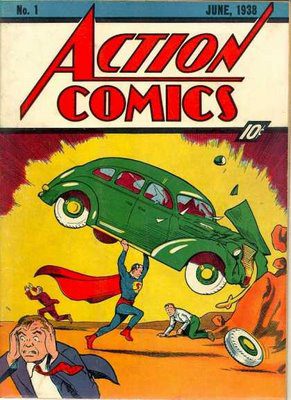 Sanderson went on to describe Superman from the 1950s to now, focusing on how DC editor Mort Weisinger’s influence on Silver Age Superman reflected adult concerns even as it appealed to kids. Silver Age Superman showed a conflicted relationship with his alien roots. In an uncredited Siegel story, he even traveled to a pre-explosion Krypton and met his parents. He rescued and then owned a miniature city of his home world, a reminder of a past where he can’t return. Here, comics testing and questioning Superman’s authority became even more pronounced. Was Clark Kent the false persona that Superman wears, or vice versa (or neither)? In many Silver Age comics, Superman lost his powers or his memory and then confronts his identity sans powers (key to his role as Superman) or his cultural upbringing (key to his personality as Clark Kent). There were comics about Bizarro Superman (what if he were the opposite of himself?), about red kryptonite splitting him into pure Clark Kent and pure Superman (without his humanity to ground him, the super-version of him became a tyrant). In still another comic, he lost both his memories as Kent and his superpowers and became “Jim White,” someone neither Kent nor Superman, which led one to ask if somehow both identities were fabrications.
Sanderson went on to describe Superman from the 1950s to now, focusing on how DC editor Mort Weisinger’s influence on Silver Age Superman reflected adult concerns even as it appealed to kids. Silver Age Superman showed a conflicted relationship with his alien roots. In an uncredited Siegel story, he even traveled to a pre-explosion Krypton and met his parents. He rescued and then owned a miniature city of his home world, a reminder of a past where he can’t return. Here, comics testing and questioning Superman’s authority became even more pronounced. Was Clark Kent the false persona that Superman wears, or vice versa (or neither)? In many Silver Age comics, Superman lost his powers or his memory and then confronts his identity sans powers (key to his role as Superman) or his cultural upbringing (key to his personality as Clark Kent). There were comics about Bizarro Superman (what if he were the opposite of himself?), about red kryptonite splitting him into pure Clark Kent and pure Superman (without his humanity to ground him, the super-version of him became a tyrant). In still another comic, he lost both his memories as Kent and his superpowers and became “Jim White,” someone neither Kent nor Superman, which led one to ask if somehow both identities were fabrications.
After the Silver Age and by the 1980s, Superman stories focused less on conflicts with his alien origins and reframed Clark Kent as a popular, brave teenager unafraid to hide behind a mask until he gets overwhelmed by Superman fans. “This is a story about celebrity,” Sanderson notes. Finally, in the trailers for the newest movie, Superman harks back to his early days as a “vigilante enigma.”
After 75 years, Superman is different from how he appeared in Action Comics No.1. In the famous legal struggles between DC and the Siegel and Shuster families, exactly how to split ownership of the character is as complex an issue as parsing his many identities. Jeff Trexler ended the symposium with a rousing discussion of the court cases surrounding the Man of Steel. He also showed Golden Age comics that appeared to comment on the tension surrounding Superman’s ownership, including “Superman’s Phony Manager,” and “The Man Who Bossed Superman.” Interestingly, because of the lawsuits, issues subsequent to this latter comic stopped featuring a Siegel and Shuster credit logo on the cover. This would continue until the 1975 ruling that the two men should be credited.
Trexler pointed out that although the Siegel family lost their appeal to reclaim the character, the 1976 Copyright Act (with its renewal terms aimed at helping creators’ families) “could be seen as a response to the Siegel and Shuster fight.”
As Trexler put it, “the weirdness of the comics universe hit the law courts.” These legal battles actually attempted to quantify the different components of Superman’s complicated identity. If the Siegel estate won back rights to the character created in Action Comics No.1, the 1938 Superman they’d receive would be sans all the elements later added to him: Kryptonite, Jimmy Olsen, super relatives, etc. Even the Superman shield would look different. If the Siegel estate then put out new Superman material, it would have to figure out how to differentiate it from the modern DC Superman. Could there ever be two Superman at the same time? As of the latest court decision in 2008, the Siegel family lost its bid to get Superman back from DC, but the Man of Steel may become available to the public domain as early as 2033.
Closing with a clip from the Smallville series finale (where adult Clark Kent flies off to save the day), Trexler concluded the evening by reminding us of everything thrilling and beloved about this complex superhero.
***
First Image: Danny Fingeroth, Photo by Andrea Tsurumi (April 22, 2013).
Second Image: Superman #1 Back Cover by Joe Shuster (1939)
Third Image: Cover of Action Comics No.1 by Joe Shuster (1938)
Fourth Image: Jeff Trexler, Photo by Andrea Tsurumi (April 22, 2013)
***
About the author: Andrea Tsurumi is an illustrator and cartoonist living in New York City. You can see her work here and her latest projects here.
